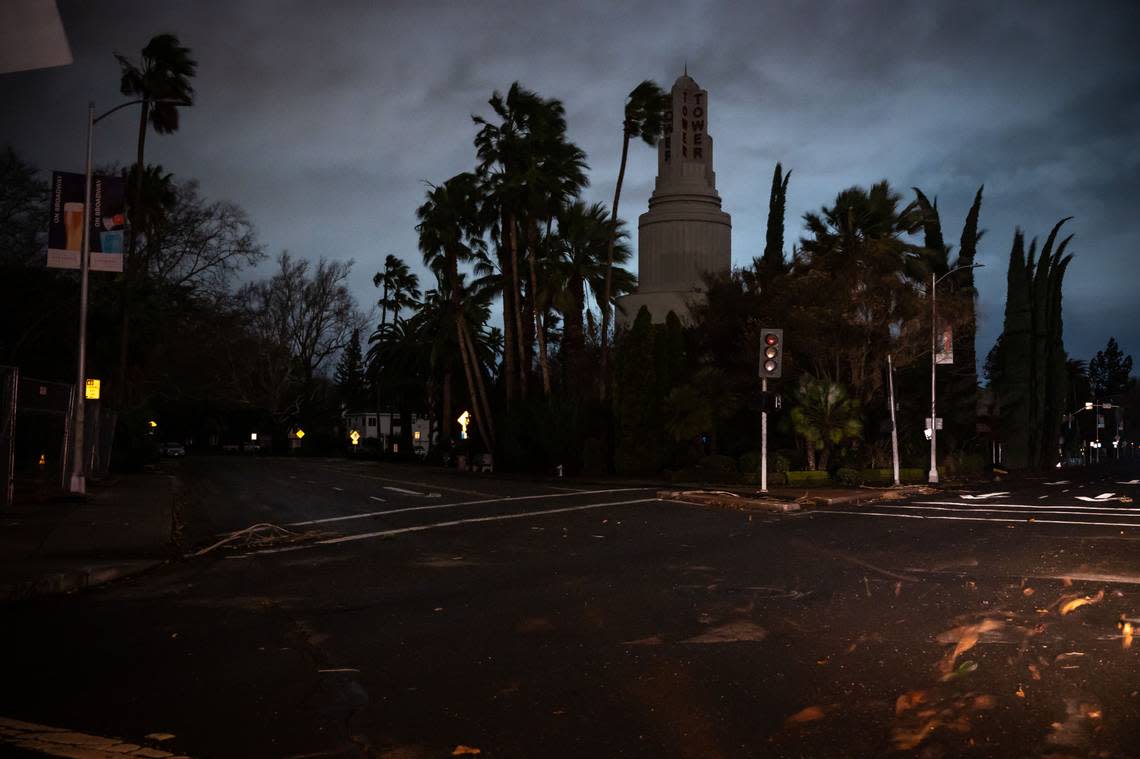See where power outages occur most often and last longest in Sacramento County

With big atmospheric rivers blasting through the City of Trees every year, power outages are a part of life in Sacramento.
But outages affect people differently depending on what neighborhood they live in. People living in Wilton experience the most frequent outages. Outages in South Sacramento affect the highest number of residents. And the outages last longest in Land Park.
There were more than 16,000 power outages from January 2017 through mid-January 2023 in Sacramento County, according to SMUD data. The Bee analyzed them all to create these maps showing trends by ZIP code.
Where Power Outages Happen in Sacramento County
To determine where people most frequently experience power outages, the Bee calculated the number of outages per 1,000 people.
Rural and semi-rural areas topped the list.
The 95693 ZIP code — which covers the Wilton area — saw 618 power outages from January 2017 through mid-January 2023. The ZIP code is home to about 7,200 people, giving it a rate of 85 outages per 1,000 people. No other ZIP came close, though ZIP codes in Rancho Murieta and Elverta also saw high rates. All of those places are long-established communities that often feature aging infrastructure.
The lowest rates of power outages were in the 95835 ZIP code covering North Natomas. That area saw only 58 power outages over the last six years, for a rate of about five outages per 1,000 people. The 95843 ZIP code in Antelope and the 95758 ZIP code in Elk Grove also saw low rates of outages. Each of those communities features thousands of relatively new homes — and lots of newer infrastructure.
“Many variables can affect the frequency of power outages, but weather is the most common,” said SMUD spokeswoman Lindsay Vanlaningham. “Strong winds can knock down trees, which in turn take down poles and lines. Neighborhoods that have large, mature tree canopies are often more prone to outages.”
Where Power Outages Last Longest
Power outages tended to last the longest in areas with a lot of trees.
In urban Sacramento, trees are something of a luxury. Wealthier established areas tend to have a lot of trees. Areas with more poverty tend to have few.
Power outages typically lasted longest in the 95818 ZIP code that covers Land Park, home to many old, huge trees. The median length of outages in the area was 243 minutes. The 95864 (Arden-Arcade), 95817 (North Oak Park) and 95819 (East Sacramento) areas all saw median power outage lengths of more than 160 minutes. Each of those places are among the areas with the most tree canopy in Sacramento.
ZIP Codes covering Citrus Heights, Valley Hi, Foothill Farms and Rosemont each experienced median power outage lengths of less than 70 minutes, the shortest outages in the region. None of those ZIPS saw more than 10% of outages caused by falling trees, according to SMUD data.
“This varies depending on the cause of the outage, the extent of damage and complexity of the repair,” Vanlaningham said of the length of outages.
Outages caused by a downed power pole can take up to 12 hours to fix, she said. “Other types of outages can be fixed in seconds or minutes by using remote equipment to reroute the power,” she added.
Where Power Outages Usually Affect A Lot of People
No big surprises here: Neighborhoods with dense housing often saw a high proportion of outages affecting at least 100 people.
About 51% of power outages in the 95824 ZIP code, which covers the densely-populated community of Lemon Hill in South Sacramento, affected at least 100 customers, a higher rate than any other ZIP code.
The 95825 ZIP in west Arden, the 95842 ZIP code in Foothill Farms and the 95819 ZIP code in East Sacramento also saw a high proportion of power outages - at least 40% - affecting more than 100 customers.
ZIP codes in north Galt, Wilton and the southern end of Elk Grove saw the lowest proportion of power outages - less than 10% - affecting at least 100 people.
“Typically, outages that impact more customers are in urban areas where we have more customers on a circuit.,” Vanlaningham said. “But that also means that a larger number of customers can have their power restored faster in an urban area compared to a rural area because one fix can restore power to more people at once.”

